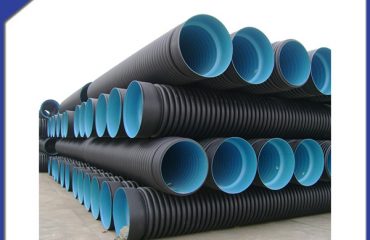
1. Introduction
Stainless steel flanges are widely used in various industries such as petrochemical, pharmaceutical, and food processing due to their excellent mechanical properties and corrosion resistance. However, the question of whether stainless steel flanges can rust is a concern for many engineers and users. This paper aims to comprehensively analyze the factors that may cause stainless steel flanges to rust and discuss corresponding preventive measures.
2. Composition and Corrosion Resistance Mechanism of Stainless Steel
Stainless steel contains a certain amount of chromium (Cr), nickel (Ni), and other alloying elements. Chromium is the key element that endows stainless steel with corrosion resistance. When stainless steel is exposed to the atmosphere or other media, chromium reacts with oxygen in the air to form a dense, stable chromium oxide film on the surface. This passive film can effectively isolate the base metal from the corrosive medium, preventing further oxidation and corrosion. For example, in 304 stainless steel, which is commonly used for flanges, it contains about 18% chromium and 8% nickel. This composition ratio ensures good corrosion resistance under normal conditions.
3. Conditions Under Which Stainless Steel Flanges May Rust
3.1 Chloride – Containing Environments
One of the most common causes of rusting in stainless steel flanges is exposure to chloride – containing environments. Chloride ions can penetrate the passive film on the surface of stainless steel. Once the passive film is damaged, the base metal is exposed to the corrosive medium. In seawater applications, for instance, the high chloride content in seawater can accelerate the corrosion process. If a stainless steel flange is used in a marine pipeline system without proper protection, pitting corrosion may occur over time. Pitting corrosion starts as small pits on the surface of the flange, which can gradually expand and penetrate the flange wall, affecting its structural integrity.
3.2 High – Temperature and High – Humidity Conditions
In high – temperature and high – humidity environments, the corrosion rate of stainless steel flanges can also increase. High humidity provides the necessary water for electrochemical corrosion reactions. When the temperature is elevated, the chemical reaction rate accelerates. In industrial settings where there is steam leakage or in tropical regions with high ambient humidity and temperature, stainless steel flanges are more prone to corrosion. The water vapor in the air can form an electrolyte film on the surface of the flange, and together with oxygen, it can initiate an electrochemical corrosion process.
3.3 Mechanical Damage
Mechanical damage to the surface of stainless steel flanges can also lead to rusting. During installation, transportation, or in – service operations, the flanges may be scratched, dented, or abraded. These damages can break the passive film on the surface, exposing the underlying metal to the environment. For example, if a stainless steel flange is scratched during installation with a rough tool, the scratched area loses the protection of the passive film and becomes an active site for corrosion. Once corrosion starts at these damaged areas, it can spread to the surrounding areas of the flange.
4. Preventive Measures Against Rusting
4.1 Material Selection
Choosing the appropriate grade of stainless steel is crucial. For applications in highly corrosive environments, such as those with high chloride content, super – austenitic stainless steels or duplex stainless steels can be selected. These types of stainless steels have higher alloying element contents, which enhance their corrosion resistance. For example, 254SMO super – austenitic stainless steel contains a high percentage of chromium, molybdenum, and nitrogen, providing excellent resistance to chloride – induced corrosion.
4.2 Surface Treatment
Surface treatment methods can significantly improve the corrosion resistance of stainless steel flanges. Passivation treatment is a common method. After passivation, a more stable and thicker passive film is formed on the surface of the flange, enhancing its resistance to corrosion. Another method is coating. Applying anti – corrosion coatings, such as epoxy coatings or polyurethane coatings, can provide an additional physical barrier between the flange and the corrosive medium. The coating can prevent the penetration of corrosive substances like chloride ions and oxygen, thus reducing the risk of rusting.
4.3 Regular Inspection and Maintenance
Regular inspection of stainless steel flanges is essential. Visual inspection can detect early signs of corrosion, such as surface discoloration or pitting. Nondestructive testing methods, such as ultrasonic testing and eddy current testing, can be used to detect internal corrosion or damage. Once any signs of corrosion are detected, appropriate maintenance measures should be taken promptly. This may include repassivation treatment for minor corrosion or replacement of the flange in case of severe corrosion.
5. Conclusion
In conclusion, although stainless steel flanges are known for their corrosion resistance, they are not completely immune to rusting. Under certain conditions, such as exposure to chloride – containing environments, high – temperature and high – humidity conditions, and mechanical damage, stainless steel flanges can experience corrosion. However, by proper material selection, surface treatment, and regular inspection and maintenance, the risk of rusting can be effectively reduced. Understanding these factors and taking appropriate preventive measures is of great significance for ensuring the safe and long – term operation of systems using stainless steel flanges.
 Language
Language Espanol
Espanol English
English Italian
Italian عربى
عربى
 Skype: chinamaker99
Skype: chinamaker99  Tel: 86-316-5120812
Tel: 86-316-5120812 Email:
Email:  Whatsapp:
Whatsapp: 

